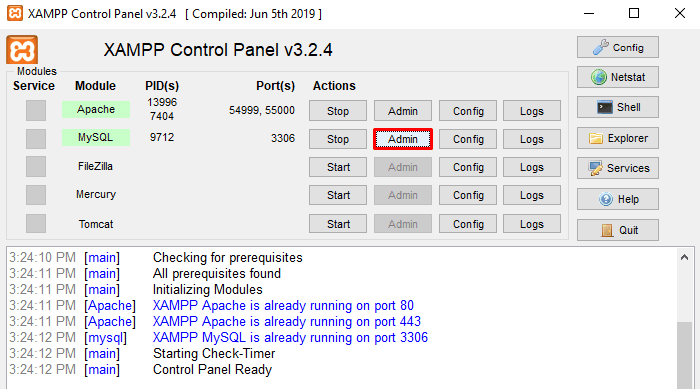

Some documentation i found says that it creates a wordpress user, but thats all i can find.
HOW TO RECOVER PHPMYADMIN ROOT PASSWORD INSTALL
digitaloceanpassword file in the /root/ does not exist on my one-click install on Ubuntu 18.04.
HOW TO RECOVER PHPMYADMIN ROOT PASSWORD UPDATE
That’s all folks and feel free to contact us in case if you have any query. First, we need to stop the daemon Code: Select all sudo /etc/init.d/mysql stop sudo mysqld -skip-grant-tables -skip-networking & mysql -u root UPDATE root SET passwordPASSWORD ('newpassword') FLUSH PRIVILEDGES (if necessary) sudo /etc/init. There is a batch file called resetroot.bat located in the xammp folders 'C:\xampp\mysql' run this and it will delete the phpmyadmin passwords. Im trying to connect to the DB with Sequel Pro and I cannot find the database username or password anywhere. We have cover one of the best solution which you can use to reset the password. You can also join the conversation if you have any other solution or idea which we can use to make it more attractive and easy. USE mysql UPDATE er SET Password PASSWORD ('mypass123') WHERE User 'root' FLUSH PRIVELEGES Save the file and close the window. Using above example we can reset MySQL root password easily and provide a way to manage user account on MySQL. Create a text file in root of any drive of local machine with name 'reset-mysql.txt' Write following command in that. Start the MySQL server and login with blank password mysql -u root -p Create New User CREATE USER IDENTIFIED BY 'admin123' GRANT ALL PRIVILEGES ON *. mysql -u root Update new MySQL root passwordĮxecute the following command to update the MySQL root password: update user set password=PASSWORD('') where User='root' update user set plugin='' where User='root' update user set authentication_string='' where User='root' flush privileges exit Stop the MySQL service sudo /etc/init.d/mysql stop Login with Blank a password The above login credentials belong to the default MySQL user account that gets created during a new install. If you’re having trouble logging into a fresh install of phpMyAdmin, then simply use the following username and password: user: root.

Leave the current terminal as it is, and open a new terminal tab and login into MySQL root password. Default phpMyAdmin username and password. Stop the MySQL service sudo /etc/init.d/mysql stop Start up safe mode sudo mysqld_safe -skip-grant-tables & Connect to MySQL This process may vary according to the operating system.

If you want to reset or change MySQL password or have forgotten the password for accessing phpMyAdmin then just follow the below step to reset the password or change the password. I’d like to share it with you a quick, simple, well written and easy method with will explains how you can reset the MySQL root password. Don’t panic it can be recovered, there is a quick and easy way to get back up and running. That’s it.Have you forgotten your MySQL root password? How can you retrieve it back? What’s should you do now? Is this recoverable or not? What happens with my Databases? These are some common question which comes to our mind whenever we lose our MySQL root password. However, you can now run almost any SQL command that you wish.Īfter you are finished close the first command prompt, and type “exit ” in the second command prompt. Execute the following command to update the password: UPDATE user SET Password = PASSWORD('your_new_passowrd') WHERE User = 'root' Type “use mysql ” so that we switch to the “mysql” database.Ĩ. You should now have the MySQL command prompt working. Leave the current MS-DOS command prompt as it is, and open a new MS-DOS command prompt window.ħ. Execute the following command in the command prompt: mysqld.exe -u root -skip-grant-tablesĤ. Then go to your MySQL bin folder, such as C:\MySQL\bin. Open your MS-DOS command prompt using “cmd” inside the Run window. This can be done from Wamp(if you use it), or start “services.msc” using Run window, and stop the service there.Ģ. If you forgot root password for your MySQL database server running under Microsoft Windows, there is still a way to access your database and even reset your password using the command prompt.ġ.


 0 kommentar(er)
0 kommentar(er)
